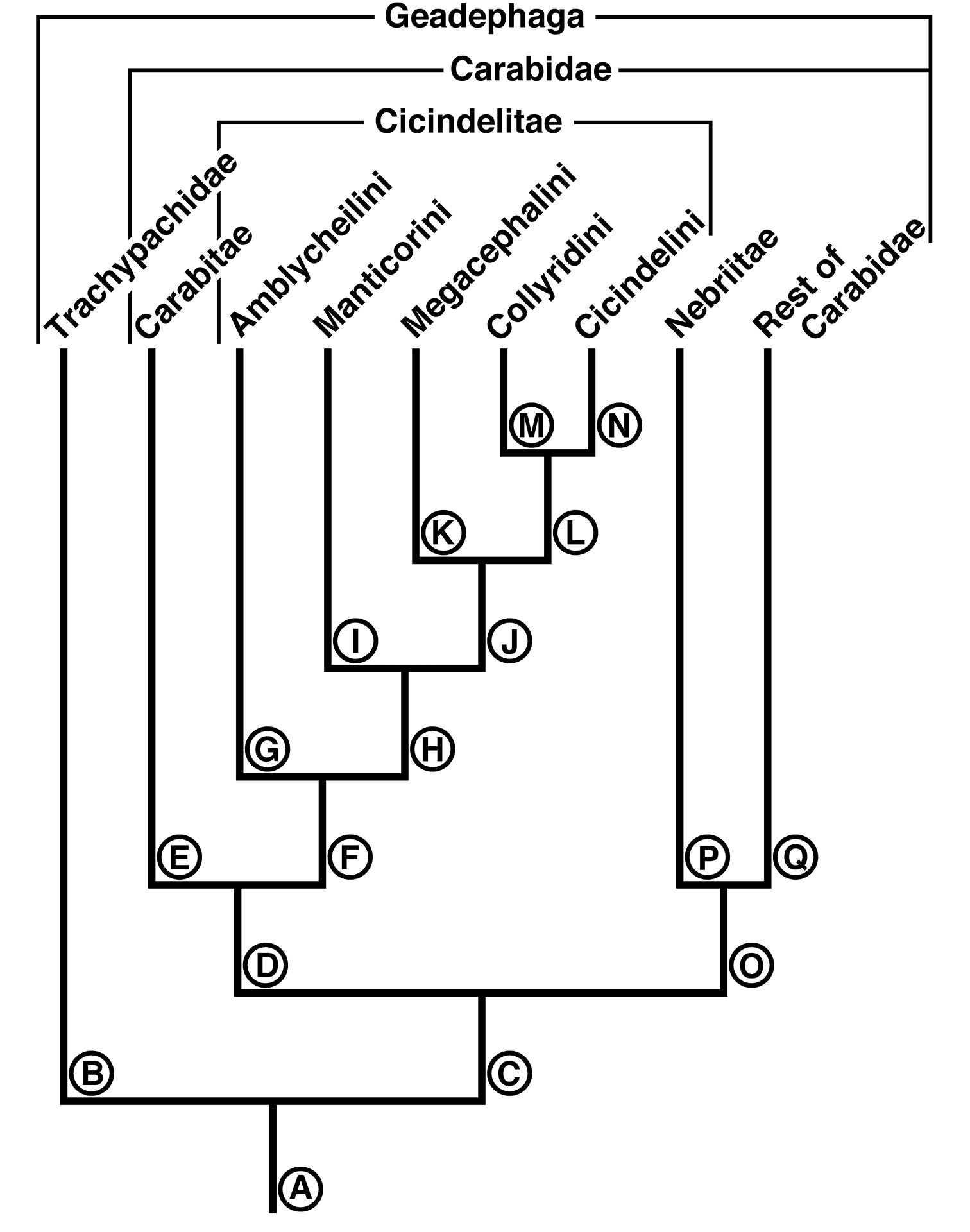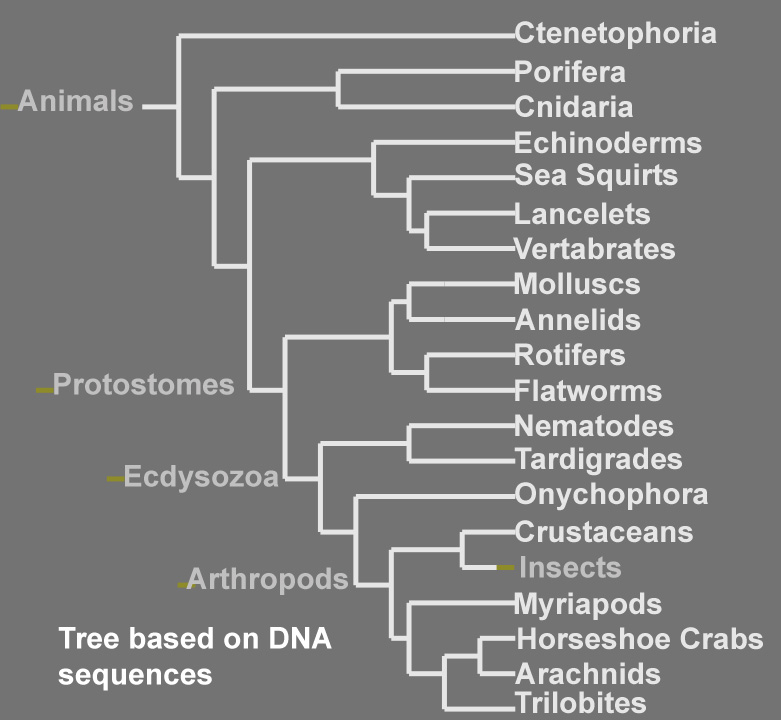Classification
Domain- Eukarya
Kingdom- Animalia
Phylum- Arthopoda
-Subphylum- Hexapoda
Class- Insecta
Order- Coleoptera
- Suborder- Adephaga
Family- Carabidae
-Subfamily- Cicindelinae
Tribe- Amblycheilini
Genus- Omus
Species- Omus californicus
-Subspecies - Omus
californicus californicus
- Omus
californicus w. horn
- Omus californicus intermedius
Figure 1. This phylogentic tree shows that the class
- Omus californicus angustocylindricus
Amblycheilini falls within the subfamily ofCicindelinae.
Eukarya-
Omus californicus is a multicellular organism in which the cells
contain a nucleus and membrane bound organelles.
Animalia- The beetle is an ingestive heterotroph with specialized
cell functions and resproduces sexually.
Arthopoda- More commonly known as
arthropods, these animals have a
hard chitin composed exoskeleton that provides structural support
for the organism. these organisms have bilateral symmetry, jointed
apendages, a segmented body, are protosomes, and triploblastic, and
molt.
Hexapoda- Literally meaning "six footed," the subphylum comatins
four groups including insects, scullenbola, proturn, and diplura
(Bartlett 2004).
 Insecta- This taxonomic class includes the insects, all of which
have three body parts: the head, the thorax, and the abdomen.
Insects also have one pair of antennae and commonly have at least
one pair of wings.
Insecta- This taxonomic class includes the insects, all of which
have three body parts: the head, the thorax, and the abdomen.
Insects also have one pair of antennae and commonly have at least
one pair of wings.
Coleoptera- Better known as beetles, the organisms within this order
have a segmented abdomen, moveable mouthparts adapted for chewing,
and have a hardened head plate during the larval stage for
protection (Bartlett 2004).
Adephaga- The ground and water beetles are the second largest
suborder from the order coleoptera which generally are predators
that have evolved chemical secretion defensives formed from the
pygidial defense glands to ward off other predators (Person et al
1988).
Carabidae- This family includes all ground beetles which have six
segmented legs with two claws and two associated types of mandibles
(Ball et al. 2011).
Cicindelinae-
California Night-stalking Tiger Beetles are
classified under all tiger beetles which have sickle shaped
mandibles and live in open habitats. At one time, the subfamily
cicindelinae was combined with the carabidea family to form one
immense group (Kinsley and Juliano 1998).
Figure 2. This phylogentic tree reveals that insects are
classified under arthropods, and are most closely related
to crustaceans.
Amblycheilini- There has been found to be greater manidbles
robustness, and enlargement of the terebral tooth (Ball et al.
2011).
Omus- Organisms found in this genus some of the most primitive tiger
beetles (Pearson et al. 1988). and are dark brown or black,
flightless, primarily nocturnal, night stalking tiger beetles with
fused elytra Bartlett 2004). This genus is one of most poorly known
genus of North American tiger beetles (Kinsley and Haines 2010).
There are five to fifteen species with only five bing offically
cited and published within this genus. Because of the intraspecifc
and interspecific variation amoung the genus and individual
populations, it is difficult to classify these organisms within the
correct taxonomic level (Kinsley and Haines 2010).
Omus californicus- this organism is a night stalking tiger beetle
found primarily in California and the Southwest areas of Oregon,
therefore, termed the California Night-stalking Tiger Beetle. There
have been four named subspecies for this species (Bartlett 2004).
Omus californicus californicus
Omus californicus subcylindricus
Omus californicus intermedius
Omus californicus angustocylindricus
Page created by
Alex Marquardt